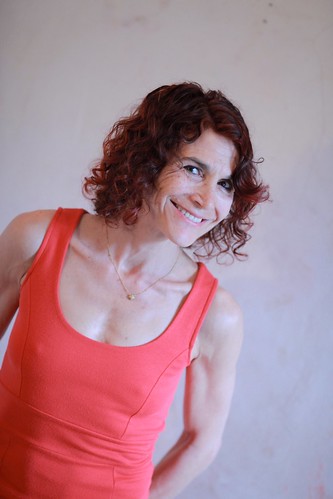Jody Oberfelder is an East Village dancer/choreographer who started out as the lead singer for the Bagdads, a punk band which played at CBGB’s. She then became a dancer and choreographer who has brought to both roles unusual athleticism, heart, humor, and in the words of Village Voice critic, Deborah Jowitt, “a zest for endearingly human dancing in an upside-down world.”
She has gone from creating works with titles such as “Wanted X Cheerleaders” and “Crash Helmet Brigade” to directing opera (“Dido and Aeneas”) and now Igor Stravinsky’s “The Soldier’s Tale,” which she will present at the Michael Schimmel Center for the Performing Arts at Pace University (where “Inside the Actors Studio” is filmed) from June 9 to 11. Recently The Local spoke to her about her work and how living in the East Village has influenced it.
You have been part of the East Village arts scene for a long time. How has living here informed your work as a dancer and choreographer?
I’ve lived in the East Village from 1980 to the present, and I saw it change from a place where it was still full of old Ukrainian characters and really scary just to go east of Avenue A. When Life Café came into being on Avenue B, I remember kind of tip-toeing my way over there beside the park. I think I was just one of the many kinds of art-makers and filmmakers who was around at that time. Steve Buscemi and his wife Jo Andres were going to all the same events, and he’s pretty famous now! It was more of a cabaret-ish atmosphere, and you’d stay out pretty late, too. There was a great performance duo called Dancenoise, and also the “Full Moon” shows at P.S. 122. This was the more liquid East Village, more sweaty and physical. There were also people doing more esoteric work at the time.
What did you feel the artistic context was for someone like yourself in New York when you started out as a dancer/performer?
Just living in the East Village was enough of a context! But there were also a lot of contrasts happening. In the dance world, things were conceptual, intellectual, minimalist, and idea-oriented. Whereas the music world in the early 80’s was much more raw and punky. So I think the pure dance world and music world were in striking contrast, and performance art, with its long lineage to other kinds of conceptual projects in Europe, bridged the gap between the art and dance worlds. It was more expressive and allowed people to have a voice that wasn’t necessarily dance, music, or theater, and could be done on a small stage. So it was an exciting time to figure out how you were going to make art.
And what was the East Village’s contribution to the dance scene at that time? Did it add something genuinely new?
I think there was a rebellious spirit in the East Village. If you think of bright loud colors as opposed to pale pink tights, more bold strokes, that’s what appealed to me. Trying to take all that emotion and put it into dynamic, short, energetic pieces. I was really trying to work in pure movement to try and nail that kind of bold physicality that really had power and spoke directly to people with just pure energy and vitality.
There was definitely a new emphasis on athleticism in dance that came into being, and also an increased female athleticism in dance. Was that something you were instinctively drawn to?
I’ve always had that physicality. I’ve never been a will o’ the wisp, lanky, floaty kind of dancer. And that came out of having been a cheerleader, a diver, and a gymnast long before I even thought about art. Other groups that had a big influence in terms of athleticism were Circus Amok, Sally Silvers, Pooh Kaye, Lava, another all-female troupe, and Elizabeth Streb. I went to her audition in 1987, and I thought, “Oh my god all these people like to move like me!” Basically, that audition was a catalyst for me to start my own company.
Although you still dance, you are primarily a choreographer now. Will we see you on stage in “The Soldier’s Tale”?
I’m in it but I’m not dancing. I really miss the release of dancing and performing. You don’t get it as a choreographer. Instead I’m working collaboratively with people who are my bodies and eyes. I’m older than them! I think for a long time you build your vocabulary on your own body, and I have the language to describe what I want and to work through other people’s bodies. Although this is Stravinsky, my East Village sensibility is still there. It’s a totally rock and roll downtown piece. It’s not stuffy, it’s “on the street,” if you can say that. What I feel is that the version of “The Soldier’s Tale” that I’m doing makes it feel as if the story is happening now among a colorful population of people.




